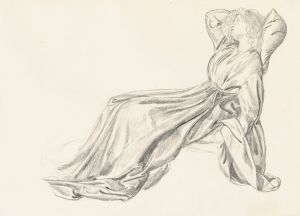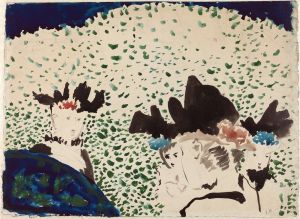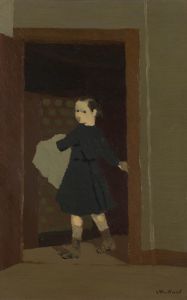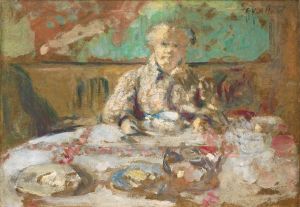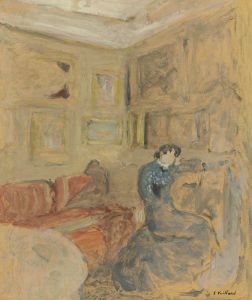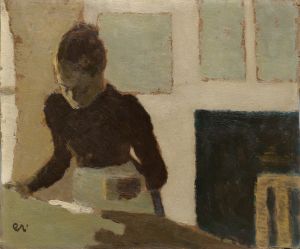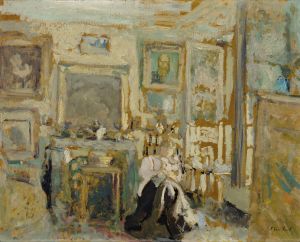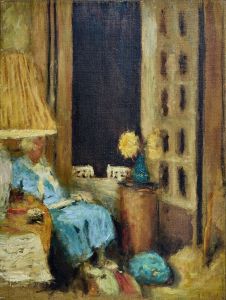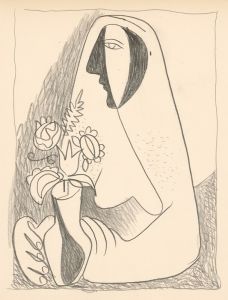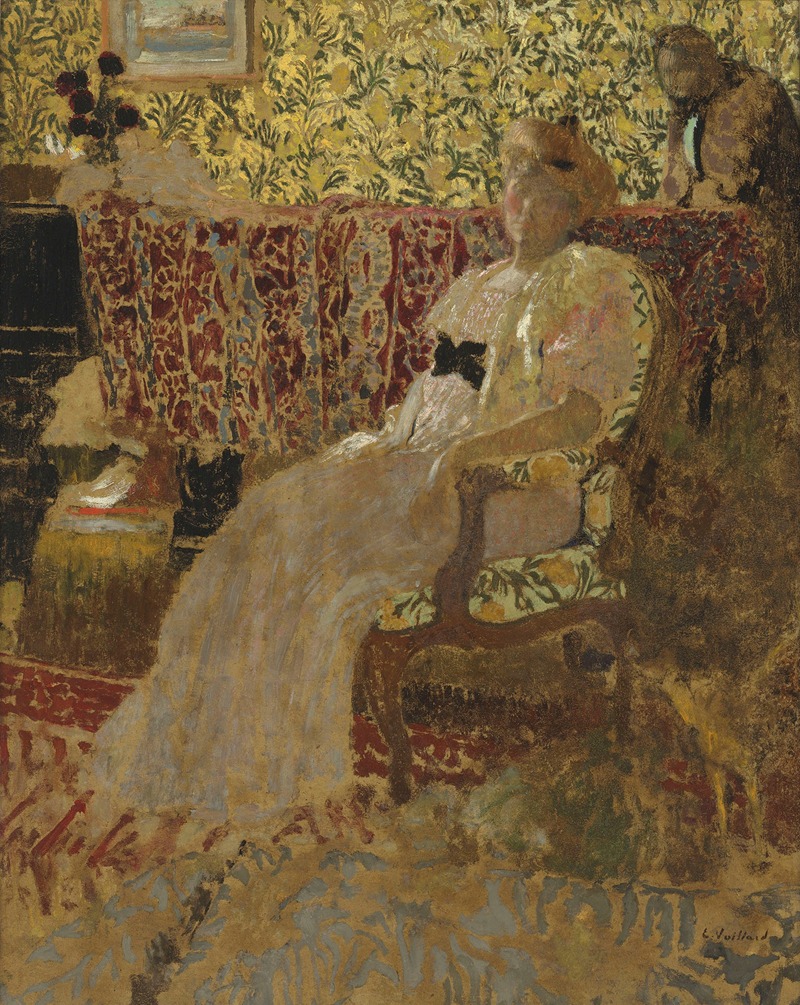
La femme au fauteuil
A hand-painted replica of Édouard Vuillard’s masterpiece La femme au fauteuil, meticulously crafted by professional artists to capture the true essence of the original. Each piece is created with museum-quality canvas and rare mineral pigments, carefully painted by experienced artists with delicate brushstrokes and rich, layered colors to perfectly recreate the texture of the original artwork. Unlike machine-printed reproductions, this hand-painted version brings the painting to life, infused with the artist’s emotions and skill in every stroke. Whether for personal collection or home decoration, it instantly elevates the artistic atmosphere of any space.
Édouard Vuillard's La Femme au Fauteuil (translated as The Woman in the Armchair) is a painting created by the French artist, who was a prominent member of the Nabi movement in the late 19th and early 20th centuries. Vuillard, known for his intimate domestic scenes and use of rich, decorative patterns, often depicted the quiet, everyday moments of life, frequently featuring women in interior settings. This painting is a quintessential example of his style, showcasing his ability to merge figure and environment into a harmonious composition.
The artwork portrays a seated woman, likely in a domestic interior, resting in an armchair. Vuillard’s characteristic use of muted yet warm tones and intricate patterns is evident in the rendering of the woman’s clothing and the surrounding space. The painting reflects his interest in the interplay between figure and background, with the patterns of the furnishings and walls blending seamlessly with the subject, creating a sense of unity and intimacy. This approach aligns with the Nabi movement's emphasis on decorative elements and the flattening of perspective, influenced by Japanese prints and Post-Impressionist techniques.
Vuillard often drew inspiration from his own life, and many of his works feature his family members or close acquaintances. While the identity of the woman in La Femme au Fauteuil is not definitively documented, it is consistent with his practice of portraying those within his immediate social circle. The painting exemplifies his focus on capturing the quiet, reflective moments of domestic life, a recurring theme in his oeuvre.
The exact date of creation for La Femme au Fauteuil is not specified in available records, but it is likely to have been painted during Vuillard’s mature period, when he was deeply engaged with the Nabi ideals and exploring the decorative potential of his art. The painting is executed in oil on canvas, a medium Vuillard frequently employed to achieve the soft, textured effects characteristic of his work.
La Femme au Fauteuil is held in a private collection or museum, though its current location is not widely documented in public sources. The painting continues to be appreciated as an example of Vuillard’s ability to convey mood and atmosphere through his distinctive style, blending the personal and the decorative in a way that resonates with viewers.
This work remains an important piece within Vuillard’s body of work, illustrating his contributions to the development of modern art and his role in the transition from the 19th-century traditions to the innovations of the 20th century.





